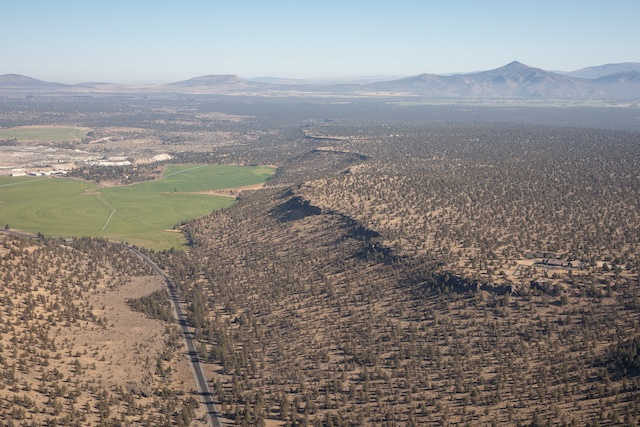Dog owners warned of mushrooms
Published 5:00 am Thursday, June 28, 2012
While they may look delicious to a dog, some mushrooms popping up around Central Oregon could make them sick or even put their lives at risk.
Poisonous mushrooms might be growing along trails, in the woods or even in your yard, said Byron Maas, a veterinarian at Bend Veterinary Clinic.
“A lot of things that grow in people’s yards are not good,” he said.
Maas warns that a wet spring could mean more mushrooms this summer, increasing the chances of a dog finding them to munch. About a dozen dogs were treated after ingesting poisonous mushrooms last year at the clinic. There have already been a couple of cases of dogs sick from the mushrooms at the clinic this year, and Maas said he expects more.
“I think the potential to be as bad as last year is here for sure,” he said.
Spring and early summer rains in Central Oregon have left damp, moist conditions prime for mushroom growth in town and in nearby forests.
“They grow everywhere,” Maas said.
While some mushrooms are harmless — even edible — others carry toxins, and differentiating between the safe and dangerous fungi can be difficult, said Jodi Kettering, a veterinarian at Deschutes Veterinary Clinic.
So she has advice for dog owners — any mushroom growing in the yard may be a bad mushroom, so pull it up and throw it away before the dog finds it.
“I check my lawn pretty much every day now,” Kettering said. “If I see lawn mushrooms coming up, I pull those out.”
Dog owners should be particularly wary of the amanita aprica mushroom, which is regularly found in local pine forests but also sprouts up on lawns, according to Linda Gilpin, who teaches a mushroom identification class at Central Oregon Community College.
Along with the amanita aprica, there are some species of small brown and white lawn mushrooms that may be toxic, she said.
“Most animals won’t eat them, but dogs do,” Gilpin said. “I don’t know why.”
Many of the dogs sickened by mushrooms end up at the Emergency Animal Clinic of Central Oregon in Bend, which is open all night, and 24 hours on weekends and holidays.
Mushroom poisoning typically happens between late May and July, but this year it seems to be starting late, said Chad Moles — medical director at the emergency clinic — adding that extended chilly weather in June caused the delay.
“You need a little bit of moisture and warmth to get them to grow,” he said.
Symptoms
Now that mushrooms are growing, Moles said about four dogs a week are brought into the clinic with signs of having eaten poisonous mushrooms. He said the amount is typical for this time of year.
The signs of a dog sickened by mushrooms vary with the kind of mushrooms the dog ate, veterinarians said, but the first warning is often vomiting and diarrhea. Other symptoms may include dizziness, tremors and full seizures. Affected dogs may also not be able to control their bladders or bowels.
Dog owners should call their veterinarian if they think their dog is sick from mushrooms, or go to the emergency clinic if their vet isn’t available, Kettering said. The sooner a dog is treated the better chance it has of escaping lasting damage from the mushrooms.
“This is very treatable,” she said.
But it can also be dangerous for a dog, especially for small dogs and puppies.
The effect of the mushrooms depends on the size of the dog, how much it ate and how long the mushrooms stay in its stomach, Moles said. A couple of years ago in Bend, a puppy died after eating mushrooms, and last year a dog’s owner decided to have the dog euthanized after it was severely injured by mushrooms.
Danger for dogs
The amanita aprica mushroom, which is toxic and can be trouble for dogs, is growing in woods and on lawns in Central Oregon this time of year.
Color: Yellow cap with a white frosting
Size: Typically about 6 inches tall and 3 inches wide, but may be larger
Other features: Stocky, wide stem
For more information about mushrooms in Central Oregon, or to pose questions about mushroom identification go to www .mushroomsinbend.org.
Source: Central Oregon Mushroom Club






